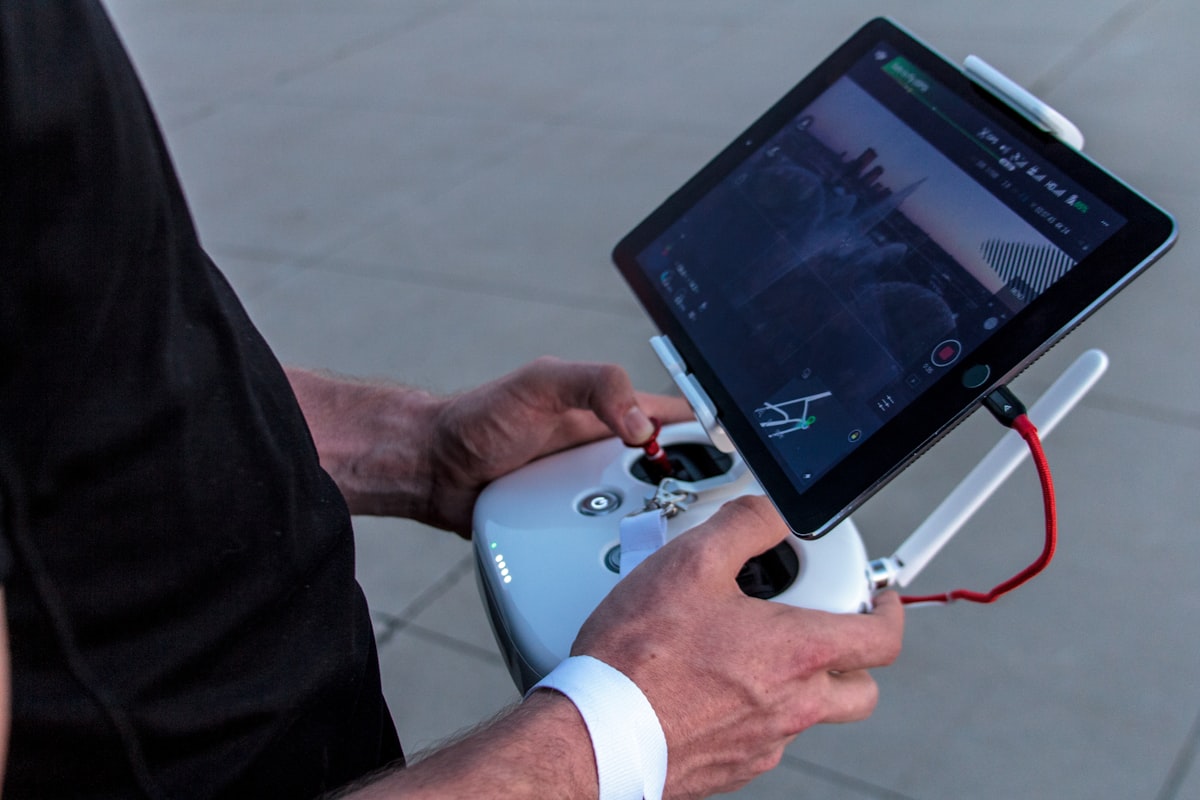Discover the Power of Wireless Current Transformer Today

Are you tired of dealing with cumbersome, hardwired current transformers? It’s time to upgrade to the cutting-edge technology of wireless current transformers. These innovative devices offer unparalleled convenience and accuracy in power monitoring and control applications.
Unlike traditional current transformers, wireless current transformers transmit data without the need for physical connections, making them ideal for hard-to-reach or hazardous locations. With their wireless capabilities, you can easily monitor and control power usage from remote locations in real-time, without ever having to be physically present.
Wireless current transformers offer a host of benefits, including enhanced safety, accuracy, and ease of use. By eliminating the need for physical connections, they also reduce the risk of injuries and damage caused by the accidental disconnection of wires.
Whether you’re working in an industrial environment, a renewable energy installation, or any other setting, wireless current transformers offer the versatility and flexibility to meet a wide range of power monitoring and control needs.
With so many advantages to offer, wireless current transformers are the clear choice for the future of power monitoring and control. So, why wait? Discover the power of wireless current transformer and upgrade your power systems today!
Understanding Current Transformers
Current transformers (CTs) are vital components in power systems, used for measuring and monitoring electrical current. They are designed to transform high-current, low-voltage signals into low-current, high-voltage signals suitable for measurement instruments and relays.
CTs have been in use for decades, primarily in industrial and utility systems. However, with the advent of wireless technology, they are now available in wireless versions as well. Wireless current transformers offer several distinct advantages, including ease of installation, freedom from wiring constraints, and enhanced accuracy.
Types of Current Transformers
There are several types of current transformers available, each with specific characteristics and applications. Some of the most common types include:
| Type | Description |
|---|---|
| Wound CTs | Consist of a primary winding and multiple secondary windings. Used in high-accuracy applications where a wide range of current levels may be encountered |
| Tape CTs | Consist of a flat, ribbon-like conductor. Used in applications where space is limited or the conductor must pass through a small opening. |
| Bar CTs | Consist of a single conducting bar. Used in medium to high current applications, such as switchgear and motor control centers. |
| Core Balance CTs | Used to detect residual currents in grounded systems and provide protection against ground faults. |
Wireless current transformers are also available in various types, each designed for specific wireless applications. Some of the most common types include:
- Wireless CTs
- Wireless current sensors
- Wireless current measurement devices
Wireless current transformers are particularly useful in situations where traditional wired solutions are either impractical or impossible to implement. They are ideal for retrofitting existing systems, where wiring changes may be difficult or costly to implement.
Advantages of Wireless Current Transformers
Wireless current transformers offer several advantages over traditional wired versions:
- Installation flexibility and ease
- Elimination of wiring costs and constraints
- Increased accuracy and reliability
- Improved safety by eliminating potential shock hazards
- Remote monitoring and control capabilities
Wireless current transformers are also more resistant to electrical noise and interference, which can affect the accuracy of traditional wired CTs.
Conclusion
Current transformers are critical components in power systems, providing accurate current measurement and monitoring. Wireless current transformers offer distinct advantages over traditional wired versions, including ease of installation, enhanced accuracy, and increased safety. With several types of CTs available, it is important to choose the appropriate device for specific applications.
The Advantages of Wireless Current Transformers
Wireless current transformers, also known as wireless CTs, wireless current sensors, or wireless current measurements, offer several unique advantages over traditional current transformers.
Enhanced safety: One of the most significant benefits of wireless current transformers is that they eliminate the need for physical connections to the electrical system, reducing the risk of electrical hazards and accidents. This feature is especially important in high-voltage or hard-to-access areas, where physical connections may be challenging or dangerous.
Improved accuracy: Wireless CTs provide real-time, accurate readings of current measurements, enabling more precise monitoring and control of electrical systems. Additionally, the wireless transmission of data eliminates the possibility of interference caused by other electrical equipment or environmental factors.
Greater ease of use: Wireless current transformers are easy to install and integrate into existing power systems, without the need for complex wiring or modifications. They can also be easily relocated or repositioned as needed, providing greater flexibility and convenience.
Cost-effective: Wireless current transformers can be a cost-effective alternative to traditional current transformers, as they require less maintenance and incur lower installation costs due to their simplified design and ease of installation.
Overall, wireless current transformers offer a powerful set of features and capabilities that make them an attractive option for power monitoring and control applications.
How Wireless Current Transformers Work
Wireless current transformers use cutting-edge technology to transmit data without the need for physical connections. They employ a range of wireless communication protocols such as Wi-Fi, Bluetooth, and Zigbee to transmit real-time data to receivers and data loggers.
The wireless CT consists of a current sensor, wireless communication modules, and a power source. The current sensor uses induction to measure the current flowing through the conductor it is wrapped around. The signal is then processed and sent to the wireless communication modules, which transmit the data wirelessly to the receiver or loggers. The power source can vary depending on the specific wireless current transformer, but it’s typically a battery or a wired connection.
Key Components of a Wireless Current Transformer:
| Component | Description |
|---|---|
| Current Sensor | Induction-based sensor that captures the current value. |
| Wireless Communication Module | Sends captured data to the receiver logger using wireless communication protocols, including Wi-Fi, Bluetooth, and Zigbee. |
| Power Source | Supplies power to the wireless CT, either via a battery or wired connection. |
Wireless current transformers offer a host of benefits over traditional, wired versions. They allow for greater flexibility in system design and can be used in remote or hard-to-reach locations. They also reduce the need for manual data collection, saving time and minimizing the risk of human error.
Overall, wireless current transformers provide a reliable and efficient solution for power monitoring and control applications. By eliminating the constraints of physical connections, they allow for greater versatility in system design and data collection.
Applications of Wireless Current Transformers
Wireless current transformers offer a versatile and flexible solution for power monitoring and control applications across various industries. Some of the most common applications for wireless current transformers include:
- Industrial power monitoring: Wireless current transformers are ideal for real-time monitoring of electrical systems, providing accurate data on current usage, voltage, power factor, and other key parameters. This data can be used to optimize system performance, prevent downtime, and reduce maintenance costs.
- Renewable energy installations: Wireless current sensors are especially useful for monitoring solar and wind energy systems. By measuring the current and voltage produced by solar panels or wind turbines, wireless current transformers can provide valuable data on energy generation, system performance, and faults or failures.
- Electrical distribution systems: Wireless current transformers are also used for monitoring electrical distribution systems in buildings, factories, and other facilities. By providing real-time data on power usage and energy consumption, wireless current transformers can help identify and address inefficiencies, reduce energy waste, and lower operating costs.
- Wireless power transformers: Wireless current transformers can also be used as part of wireless power transformer systems, which transmit power wirelessly between two or more devices. This technology is still in the early stages of development but has the potential to revolutionize power transmission and distribution.
- Wireless energy transformers: Wireless current transformers can also be used in wireless energy transformer systems, which convert energy from one form to another, such as from AC to DC. Wireless energy transformers have a wide range of applications, from consumer electronics to industrial automation.
Overall, wireless current transformers offer a range of benefits for power monitoring and control applications, including improved safety, accuracy, and ease of use. With their versatility and flexibility, wireless current transformers are poised to play a significant role in the future of electrical systems and energy management.
Choosing the Right Wireless Current Transformer
When selecting a wireless current transformer, it’s important to consider a range of factors to ensure that the device meets specific requirements. Here are some key considerations to keep in mind:
- Current range: Ensure that the wireless current transformer can measure the range of currents that will be encountered in the system. Some devices only support specific current ranges, so it’s vital to choose one that will work for the intended application.
- Accuracy: Look for a device with high accuracy if precise measurements are required. The accuracy of a wireless current transformer can be affected by a range of factors, including temperature, linearity, and saturation, so make sure to choose a device that is designed to meet the necessary accuracy requirements.
- Communication protocols: Check which communication protocols are supported by the wireless current transformer. Common protocols include Wi-Fi, Zigbee, and Bluetooth, so choose one that is compatible with the existing system.
- Installation considerations: Consider installation requirements, including physical dimensions and mounting options. Some devices are designed for use in specific environments, so make sure to choose one that is suitable for the intended application.
- Price: Compare the price of different wireless current transformers to ensure that the chosen device offers good value for money. However, keep in mind that expensive options may offer additional features or greater accuracy.
By taking these factors into account, it’s possible to select the right wireless current transformer for any application. Don’t forget that there are also a wide range of traditional current transformers and wired devices available, so consider all options before making a final decision.
Installation and Integration of Wireless Current Transformers
Proper installation and integration of wireless current transformers are critical for optimal performance and accurate data monitoring. The following steps outline the installation process:
- Plan the installation: Determine the location of the wireless current transformer and ensure that it is easily accessible for maintenance and data collection. Identify any potential obstacles or hazards that may affect the installation.
- Prepare the site: Ensure that the installation site is clean and free from debris. Make sure that the transformer is mounted on a secure and stable surface to prevent any damage or vibration during operation.
- Connect the transformer: Follow the manufacturer’s instructions to connect the wireless current transformer to the power source and the data collection system. Ensure that all cables and connections are properly secured.
- Test the system: Before starting the system, perform a test to ensure that all connections are correct and that the transformer is functioning properly. Check the accuracy of the data being collected and compare it to the actual current levels.
- Calibrate the system: Once the system is installed and tested, calibrate it to ensure that it is collecting accurate data. This involves comparing the readings from the wireless current transformer to a reference meter or device and adjusting the calibration settings as necessary.
- Integrate into the power system: Finally, integrate the wireless current transformer into the power system to enable remote data monitoring and control. Ensure that the data collection system is compatible with the wireless current transformer’s communication protocol.
By following these steps, you can ensure a successful installation and integration of a wireless current transformer in your power monitoring and control system.
Conclusion
In conclusion, wireless current transformers offer a game-changing solution for power monitoring and control applications. By eliminating the need for physical connections and enhancing safety and accuracy, wireless current transformers have become a popular choice for industries ranging from manufacturing to renewable energy.
When selecting a wireless current transformer, it is essential to consider factors such as the current range, accuracy, communication protocols, and installation requirements. By following best practices for installation and integration, users can ensure a smooth and successful implementation of wireless current transformers into their power systems.
As technology continues to evolve, wireless current transformers are poised to play an increasingly critical role in power monitoring and control applications. By leveraging the advantages offered by wireless current transformers, businesses can enhance efficiency, reliability, and safety in their operations.




